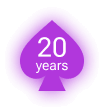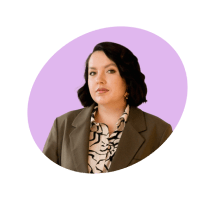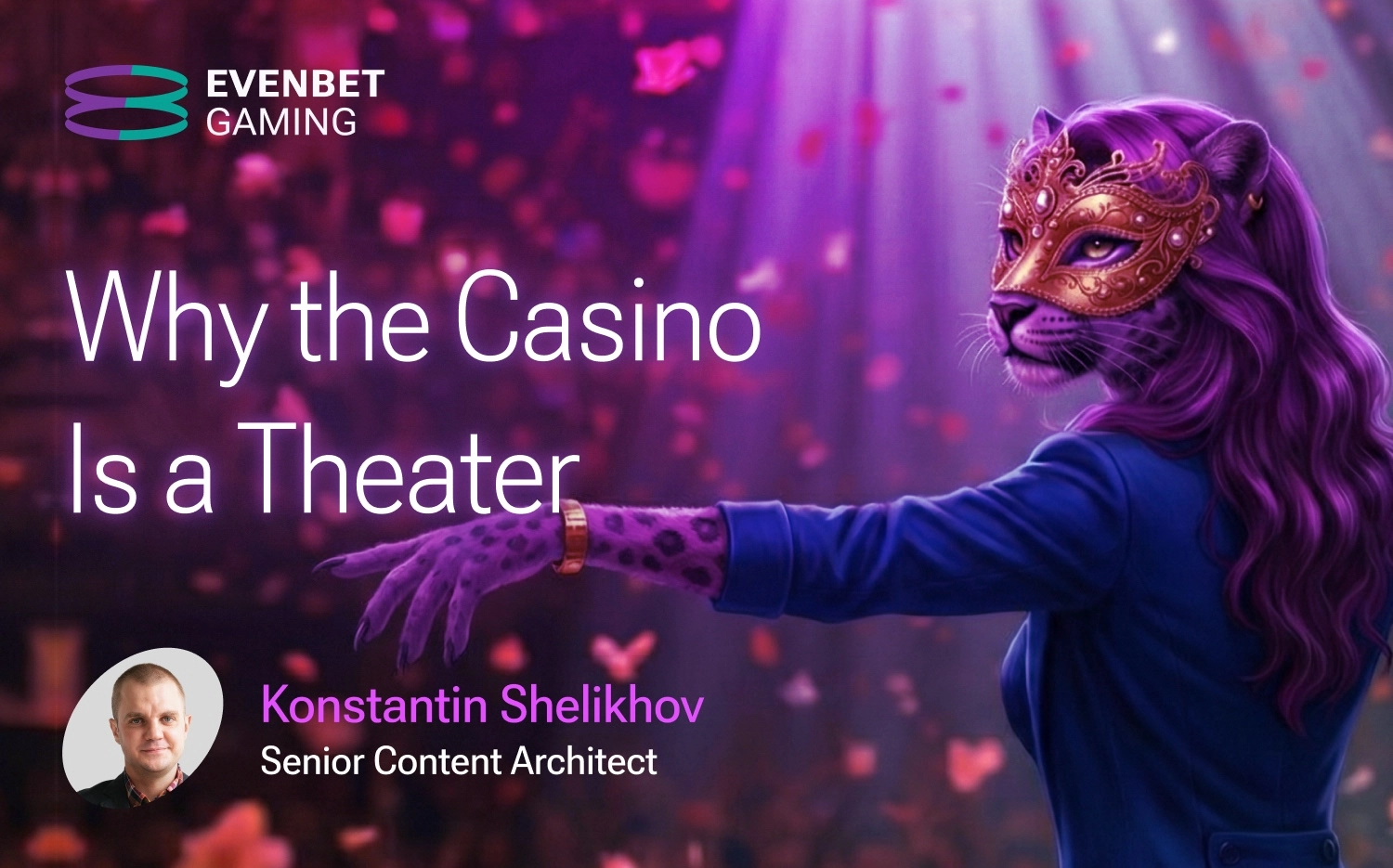EvenBet Gaming’s HR Director Daria Fot spoke with Kate Chambers, founder of The Gaming Boardroom. Dive into their insightful talk to learn more about hiring talents that are a right fit for the company, preventing burnout and creating a community in a remote-first environment, and keep the employee turnover twice as low as the average in the iGaming industry.
KC: You’ve reported an eNPS of above 60% and early turnover of under 12%. Which of EvenBet’s initiatives do you think have been most effective in achieving those results? How do you define “talent retention” at EvenBet? What’s success look like, especially in a nearly fully remote company?
DF: That’s a great question, and I’m really glad you mentioned both eNPS and early turnover — because they’re closely connected. When we talk about early turnover, especially within the first year, the key factor is always hiring. For us, it’s not just about a candidate’s skills or experience — it’s about values alignment. During interviews, we openly discuss our culture, ways of working, and expectations to make sure it’s a mutual fit. Even before the interview, we share our values and culture across our social media and website to make potential hires acquainted with EvenBet from the inside. As a result, our first-year turnover is just 11.9%.
But of course, the goal isn’t just to retain someone for one year — it’s to build long-term relationships. Our overall turnover is 16.5%, significantly below the industry average of 25–30%. And one of the biggest reasons for that is the effort we put into building and maintaining a strong internal culture.
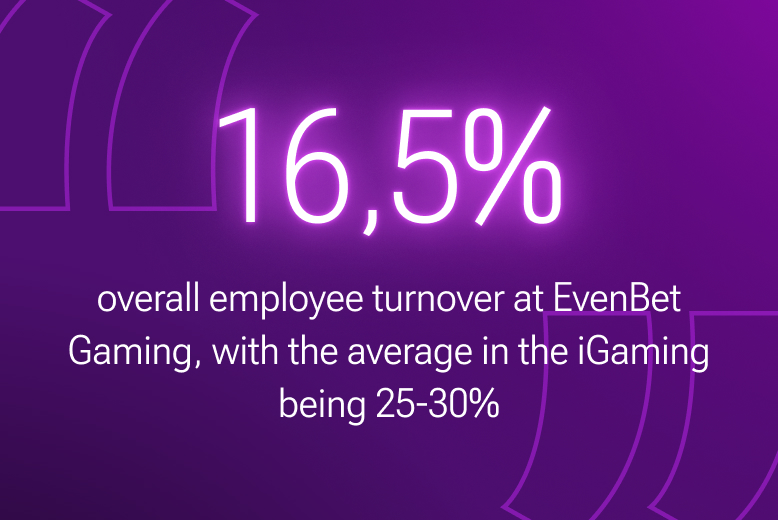
Another important factor is thinking about the future. We don’t hire people to fill an urgent gap or deliver on one specific task. Because once that task is done, what’s next for them? We look at every new team member as someone who can grow with us — and we act accordingly. From day one, we’re thinking about their development, aligning their personal goals with our business goals. Everyone has a clear 3-5 year career track. And we’re very proud to say that currently, we have zero resignations due to a lack of growth opportunities within the company.
There’s no silver bullet — it’s a system. We have mentoring programs, regular 1-to-1s with both managers and HR People Partners, and practical tools for goal setting and feedback. It’s this combination of structure and human connection that really works.
And how do we know what’s working and what needs to improve? We stay in constant dialogue with the team. Our eNPS surveys always include open questions — we want to hear what people would like to change or improve. We also conduct exit interviews with 100% of those leaving, and we go deep — we analyse whether it was a voluntary or involuntary exit, and whether we would’ve wanted that person to stay. This gives us a much clearer picture than just looking at a percentage.
In short, talent retention for us is about creating an environment where people feel they can thrive — not just now, but long-term.
KC: With some key team members in offices and most employees working remotely, what unique retention challenges have emerged from this model? How do remote employees’ needs differ from those working in the office, and how have you adapted support accordingly?
DF: Definitely — managing a distributed team comes with its own set of challenges, especially when it comes to keeping everyone engaged and connected. The majority of our team works remotely from all over the world. And that setup requires a very intentional approach to communication, culture, and support.
When the pandemic hit in 2020, like most companies, we had to adapt quickly. We restructured workflows, moved the focus from controlling how people work to focusing on outcomes, and introduced new communication tools. And honestly, we handled that transition quite well. But at the time, I’d say our culture was still somewhat office-centred — even if unintentionally.
As the share of remote employees grew, we started to feel that gap more clearly. That’s when we realised we needed to actively reshape the culture to make remote team members feel just as included, supported, and connected as those working in offices. Over the past couple of years, we’ve put a lot of effort into that transformation — and today, it’s a very different picture.
Just recently, we completed the development of our company values — a process that really helped to cement this cultural shift. It gave us a shared foundation that brings together employees across almost twenty countries. Now, no matter where someone is based, the goal is for them to feel a part of the team, with a clear sense of belonging and purpose.
KC: Your HR blog emphasises remote burnout and mental health intervention. How are you monitoring stress levels and responding proactively? Can you share a particular wellness initiative (e.g. pulse surveys, extra leave offers, co‑working support) that’s made a tangible difference?
DF: We take burnout very seriously — especially in a remote environment, where signs of stress can be harder to notice until they become real problems. One of our priorities in HR is making sure workloads are balanced and no one is consistently overworked. We keep a close eye on task distribution and always encourage team leads to flag when someone might be nearing their limit.
We also try to offer flexibility before things get critical. For instance, every employee can take up to three additional days off per year — no doctor’s note needed — just to rest and recover if they’re feeling off. And when someone is genuinely unwell, our message is clear: no pushing through. We want them to take the time they need to recover properly. That’s why we pay 100% of sick leave — there’s no drop in income, which removes a major reason people often try to work through illness. On top of that, we reimburse paid medical expenses, because we know health — physical and mental — comes first.
Surveys are useful, of course, and we use them, but they tend to highlight issues once they’ve already become noticeable. So we also focus on prevention. One initiative that really resonated with the team was a series of sessions with a psychologist. We started with burnout as a core theme, but then opened the format up so employees could suggest topics that mattered most to them — things like work-life balance, emotional regulation, or even personal boundaries.
The key, I think, is to create an environment where people know it’s okay to ask for support — and where they don’t have to wait until they’re at a breaking point to get it.
KC: How do you foster community and camaraderie within a dispersed workforce? What offline or online events have had the most impact? Tell me more about “Team Day” and how the concept has been received across different countries and cultures.
DF: Building a sense of community in a remote-first company is one of the most important — and ongoing — challenges we face. We started actively rethinking our approach back in 2020, and since then, we’ve made sure that every major team activity is designed with remote participation in mind.
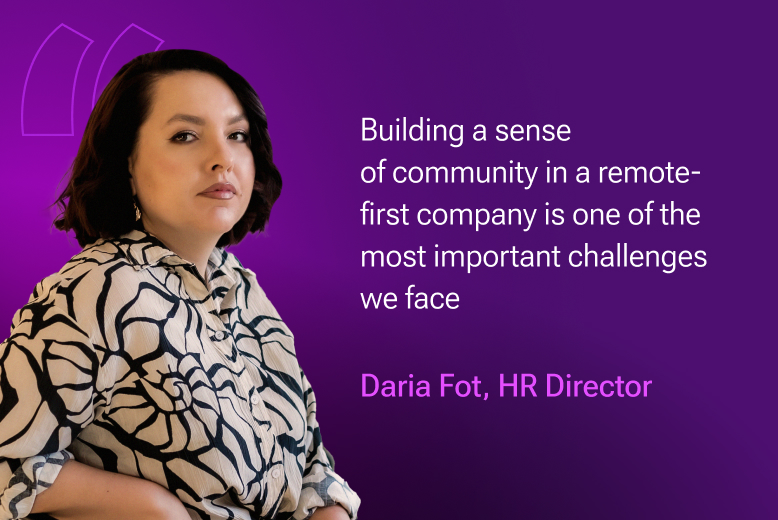
For example, our monthly company-wide townhalls are always held online. It’s a live video session where our CEO, Dmitry Starostenkov, shares updates, answers questions, and just connects with the entire team. No matter where you are in the world, you’re part of that conversation in real time.
Team Day is another initiative we’re proud of. It’s our way of celebrating the people behind the product — a holiday created specifically to appreciate our team. And we’ve designed it to be culturally universal. There’s no specific holiday or national reference; it’s all about recognition, gratitude, and connection. We look back at our achievements, congratulate each other, give out gifts, and it’s all done online so that everyone, everywhere, can join in fully.
But it’s not just about big events. Smaller, regular rituals matter too. In the marketing team, for instance, there’s a tradition of doing a 15-minute call once a week — not to discuss work, but to catch up on weekend plans, hobbies, or family life. It’s a small touchpoint, but it makes a big difference in creating a human connection.
And of course — we play poker. We are a poker company, after all! Once a month, we host an internal online tournament using our platform, and the winners get company-sponsored prizes. It’s a fun way to stay connected, and it brings together both beginners and true enthusiasts from across the team.
That said, we also know there’s no substitute for meeting in person. Once a year, we organise an offline celebration for EvenBet’s birthday. We bring people together in one location from across the globe — and for many, it’s the highlight of the year. It’s powerful to see colleagues you’ve only known through a screen suddenly standing next to you, and it reinforces everything we’re building together.
KC: You’ve mentioned hiring non‑standard talent and competing with the entertainment industry. How are your hiring practices evolving, particularly around Gen Z and people from outside iGaming?
DF: There’s a global shift happening in hiring — and we’re very much part of it. Today, soft skills are often more important than hard skills. When we meet a candidate with strong communication, adaptability, and the ability to learn fast — even if they’re missing a few boxes on the technical side — that’s someone we’ll absolutely consider. In many cases, that kind of mindset ends up being more valuable long-term than a perfect resume.
That’s also why direct experience in iGaming isn’t a must for us. Of course, it helps in some roles, but we’ve seen again and again how people coming from adjacent or even completely different industries bring a fresh perspective. They ask different questions, challenge our assumptions, and sometimes introduce approaches we wouldn’t have considered. It keeps us evolving.
As for Gen Z — yes, they have their own traits, like any generation. But we don’t try to create special policies just for them. Because when you look at what they actually value — psychological safety, meaningful work, growth opportunities, purpose-driven initiatives like charity or sustainability — these are things we all want. I’m not Gen Z myself, and I want that too! So, rather than chasing generational trends, we focus on building the kind of company that feels right for the present and future of work. A company that’s inclusive, modern, and human-centred — where people of any age or background can thrive.
KC: Remote work demands higher independence, what internal learning, mentoring, or training frameworks support this? Junior staff tend to be more loyal if developed in-house. How do you balance investing in juniors and ensuring their development leads to retention?
DF: If you look at pretty much any survey on work format preferences these days, the results are clear: most people prefer remote work. And we respect that — it offers flexibility, better work-life balance, and often even higher productivity. But at the same time, we’re very honest about the fact that remote work is harder. It demands more structure, more independence, and stronger self-management.
That’s why during interviews, especially for junior roles, we pay close attention to things like personal organisation, time management, and previous remote experience. These aren’t just nice-to-haves — they’re essential for thriving in our environment.
Once someone joins the team, development becomes a shared responsibility. We support growth through both internal and external resources. Internally, we have mentoring programs and a strong culture of knowledge sharing. Externally, we’re happy to invest in courses or professional programs — as long as the learning path makes sense for both the individual and the business. It’s never just “learn whatever you want.” We work together to find that sweet spot where a person’s interests align with our company’s direction.
And you’re absolutely right — junior employees tend to stay longer if they see real opportunities for development. That’s something we consciously invest in. But we also try to avoid a one-size-fits-all approach. Not everyone learns the same way or at the same pace, especially in a remote setting. So we stay flexible, and we check in regularly to adjust the development path if needed.
In the end, it’s about mutual commitment. If someone shows initiative and drive, we’ll always match that with resources and support — because that’s how you grow loyal, skilled professionals from within.
KC: You track eNPS and early turnover. Are there other KPIs you follow to measure remote employee engagement or retention? How do you close the loop on insights from those metrics, and how do they shape policy or future programmes?
DF: Yes, eNPS and early turnover are key metrics for us, but they’re definitely not the only ones we rely on. We track a whole range of KPIs to get a fuller picture of how people are doing — especially in a remote environment where some signals can be less visible.
One important area we watch closely is onboarding. We want new team members to feel connected and productive as soon as possible, so we always collect feedback on their onboarding experience. How quickly did they feel part of the team? Was the process clear? Did they get the support they needed? Those insights help us constantly improve the onboarding journey.
We also look at internal mobility and professional growth. For example, we track how many of our team leads and C-level managers came up through the company. That’s a powerful signal that we’re not just hiring talent — we’re developing it. By the way, 65% of Team Leads and 67% of our C-level team have grown from within.
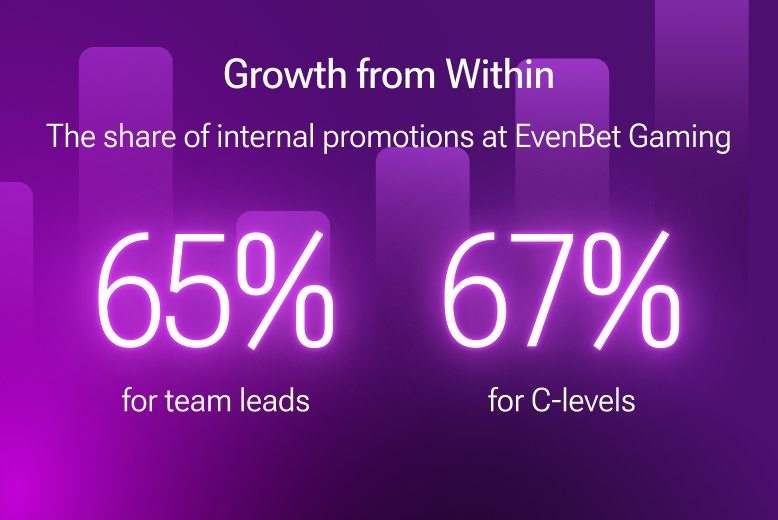
The specific metrics we focus on can shift depending on what’s happening in the business. If we’re scaling fast, we might zoom in more on onboarding and integration. If we’re stabilising, we might look more at long-term engagement and growth paths. But what really matters is what we do with the data.
Whenever we spot trends — good or bad — we make it a point to close the loop. That could mean adjusting a process, piloting a new program, or even rethinking a policy entirely. The key is staying responsive and making sure our people feel heard, not just measured.
KC: As we move further into 2025, what HR trends (e.g. flexible schedules, mental‑health investment, hybrid models) are top priorities for EvenBet? What challenges are you watching as remote work evolves, regulatory fragmentation, cultural diversity, and new working preferences, and how are you preparing?
DF: One of the biggest shifts we’re seeing as we move into 2025 is the growing importance of employer branding. Candidates today aren’t just choosing a job — they’re choosing a team, a culture, a community. During interviews, we’re getting more and more questions about who they’ll be working with, what kind of people make up the team, what internal events we organise, and how the company supports personal connections. It’s no longer just about tasks or the product — it’s about the full experience of being part of something.
That’s why our company culture is such a priority. And our company values — which we recently finalised — play a huge role in supporting that. They’re not just words on a wall. They’re a real tool we use in hiring. We share them with every candidate and openly discuss whether there’s alignment. It’s a two-way process: we’re not just asking if the person is right for us — we also want to know if we’re right for them.
Looking ahead, we’re also keeping a close eye on some of the larger structural challenges: how remote work regulations differ by country, how to remain inclusive across cultures, and how expectations around flexibility and wellbeing continue to evolve. These aren’t things you solve once and forget about — they require constant attention and adaptation. But our strategy is simple: stay human, stay open, and stay flexible. If we do that, we’re confident we’ll keep building a company people want to grow with.
Learn about the career opportunities at EvenBet Gaming now and join our outstanding team



